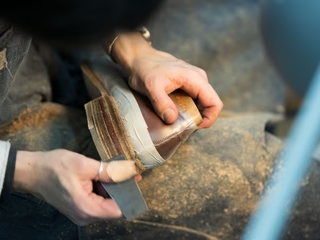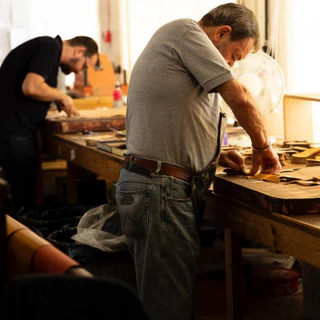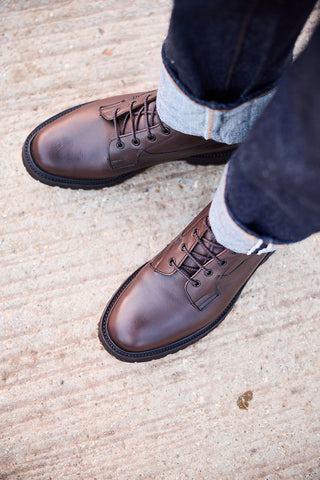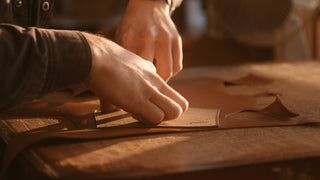We have re-introduced the Cihcago loafer this season A Penny loafer from our archives. Fully lined and on a Ultraflex leather sole, to give it a more relaxed and comfortable fit.
The loafer style dates back to Norway in the early 1930s. Taking inspiration from the moccasin shoes worn by native Americans in North America, and the simple slip-ons on the feet of Norwegian fishermen, the first design was born.
Popularity grew and export orders were sent across Europe and America. Esquire magazine even featured an article with photographs of Norwegian farmers wearing the shoe in cattle loafing sheds.
Soon after, the Spaulding family of New Hampshire, USA, began manufacturing a similar shoe, called the Loafer. This name later became a generic term used to describe a slip-on, moccasin shoe.
In 1934, G. H. Bass made his first version of the loafer which he called Weejuns. This appears to be a play on words on the origin of the original designer. A distinctive feature of this new design was a strip of leather stitched across the saddle of the shoe, featuring a shaped cutout.
In 1950s America before trainers were invented, the Weejun became the shoe of choice for young men and students. It became fashionable to keep a dime in the half moon cut out slot of the leather strip. This eventually gave the shoes their colloquial name of Penny Loafer, which is still used today.
We have re-introduced the Cihcago loafer this season A Penny loafer from our archives. Fully lined and on a Ultraflex leather sole, to give it a more relaxed and comfortable fit.
The loafer style dates back to Norway in the early 1930s. Taking inspiration from the moccasin shoes worn by native Americans in North America, and the simple slip-ons on the feet of Norwegian fishermen, the first design was born.
Popularity grew and export orders were sent across Europe and America. Esquire magazine even featured an article with photographs of Norwegian farmers wearing the shoe in cattle loafing sheds.
Soon after, the Spaulding family of New Hampshire, USA, began manufacturing a similar shoe, called the Loafer. This name later became a generic term used to describe a slip-on, moccasin shoe.
In 1934, G. H. Bass made his first version of the loafer which he called Weejuns. This appears to be a play on words on the origin of the original designer. A distinctive feature of this new design was a strip of leather stitched across the saddle of the shoe, featuring a shaped cutout.
In 1950s America before trainers were invented, the Weejun became the shoe of choice for young men and students. It became fashionable to keep a dime in the half moon cut out slot of the leather strip. This eventually gave the shoes their colloquial name of Penny Loafer, which is still used today.

SHOE KNOWLEDGE
Loafer


LAST NO: 5567
This last has been used for decades. It is part of our history and character as England's oldest shoe manufacturer. The size (length fitting) of Tricker’s footwear made on this last (W2298) is true to size, we recommend sticking to your regular UK Size. If you are unsure of your UK size, use our size guide to convert your known size to a UK size.
The last is a hard, three-dimensional form on which the shoe is constructed. Depending on the style of shoe we use different lasts, this is what dictates the overall shape, proportion, fit and character of the shoe.

Bookbinder
Why Tricker's?
8 weeks | 260 processes
10 min watch | The Construction Process
8 weeks | 260 processes
10 min watch | The Construction Process

A True Investment
100% Repairable
It's inevitable that shoes will need a bit of TLC from time to time but look after them and they will last you a lifetime.
We offer a fully inclusive repair service from re-heeling to total makeovers.

Uncompromising Standards
Built To Last
Our uncompromising standards of craftsmanship, honest materials, environmentalism and sustainability are values that have been preserved and developed through five generations.
Every material used in our construction can be traced back to its source.











